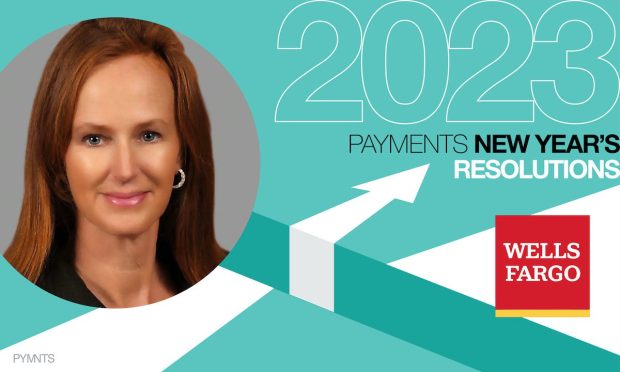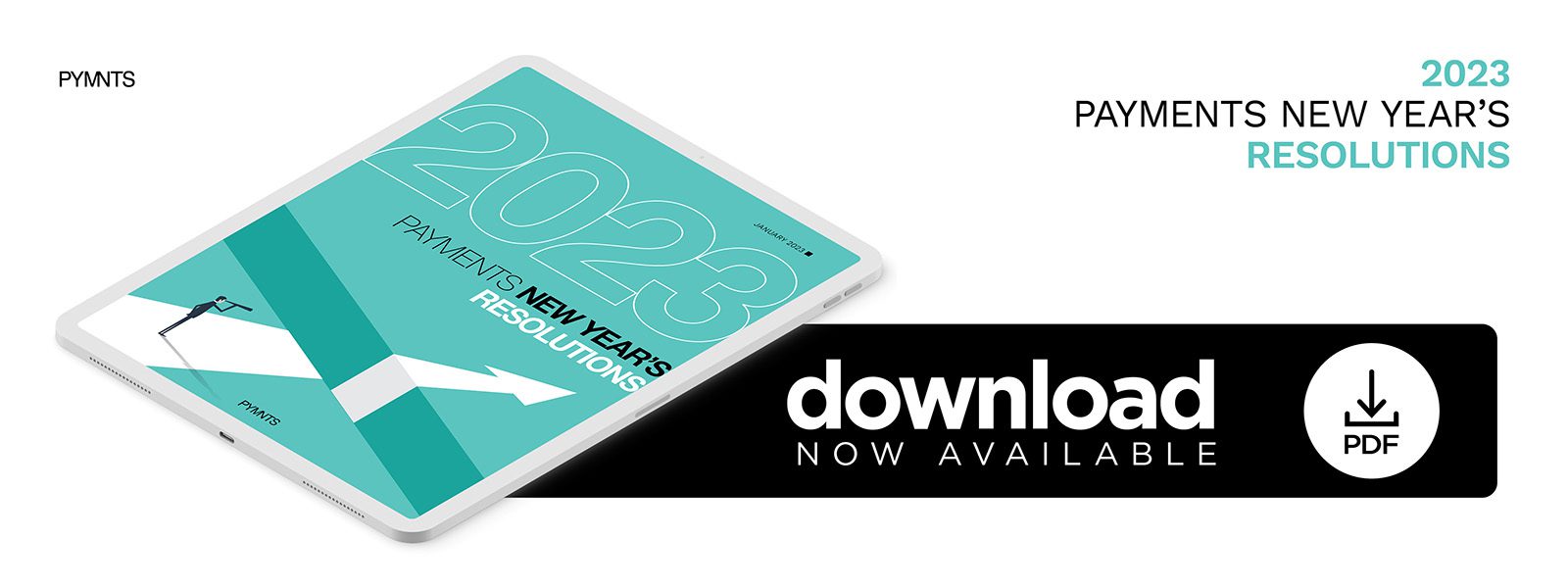Wells Fargo Says Payments Should Be as Easy to Use as Apps

The payments industry must do more to respond to consumers and businesses seeking intuitive payment tools, Wells Fargo Head of Enterprise Payments Strategy Ulrike Guigui writes in the new PYMNTS eBook, “2023 Payments New Year’s Resolutions.”
While there may be challenging economic headwinds ahead, there are many opportunities for the payments ecosystem to grow and innovate. Over the past several years, the industry has evolved quickly, and new behaviors emerged that gave rise to more efficient and seamless payment tools and solutions. Digital payments took off like never before, tap-and-go became widespread and digital wallets gained traction.
Today, consumers and businesses are increasingly looking for more intuitive payment tools and solutions — ones that mirror the simplicity and functionality of the apps they use in their personal lives. The payments industry must do more to respond.
There are three New Year’s insights that will help the payments industry and commerce landscape excel in 2023:
- Digital solutions will create powerful options for consumers and businesses. Consumers have adopted digital payment tools quickly in the past several years. The share of P2P cash use fell below 50% for the first time since 2016, according to data from the Federal Reserve. And business payments are increasingly digital. The reasons are clear. Digital payments raise a company’s productivity, and quick settlement of funds is especially critical for small businesses. Digital payments also generate rich data, enabling businesses to deliver new and better ways to service customers. This is not a blip. It’s the start of the new normal.
- Real-time payment adoption grows, but ubiquity is elusive. Instant payments are on a significant growth trajectory. As of November 2022, the RTP® network reached 62% of existing demand deposit accounts, according to data from The Clearing House. Earned Wage Access (EWA), also known as on-demand pay, gives workers immediate access to pay on the day they work. Instant payments also provide businesses with better liquidity management, ensuring payments are streamlined. And the impending rollout of FedNow will provide more access to methods for instant payments. While widespread adoption of any one RTP system is still elusive, we will continue to see rapid adoption of instant payment solutions.
- Customer-centric, personalized product evolution is more important than ever. In a rising rate environment, there may be downward pressure on investments, and as a result, the industry may have to do things differently. But that doesn’t mean innovation stops. Flexibility and personalization are key. For instance, our new virtual assistant Fargo will provide a more personalized and intuitive banking experience. And our new loan products (e.g., Flex Loan) and credit products (e.g., Active Cash®) provide customized lending solutions to customers, who all have varied needs. These examples demonstrate banks can still innovate in a challenging and dynamic environment.
It will require collaboration across the payments ecosystem to address our clients’ pain points and add value to their lives, both personally and professionally. It’s about leveraging relationships — financial institutions and FinTech partners — to create successful payment tools and solutions. I am confident that the industry will rise to this challenge, and 2023 will be a year of innovation, cooperation, and progress.


